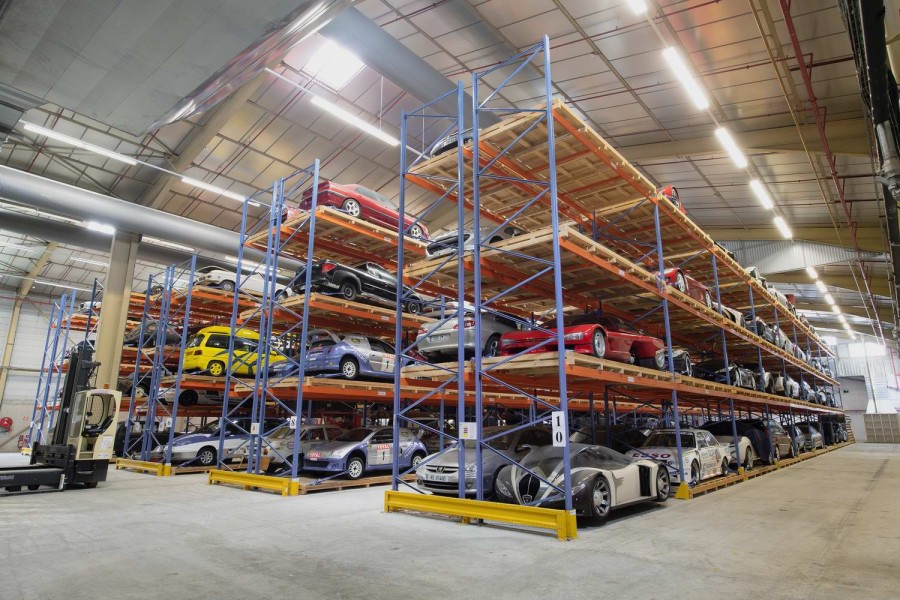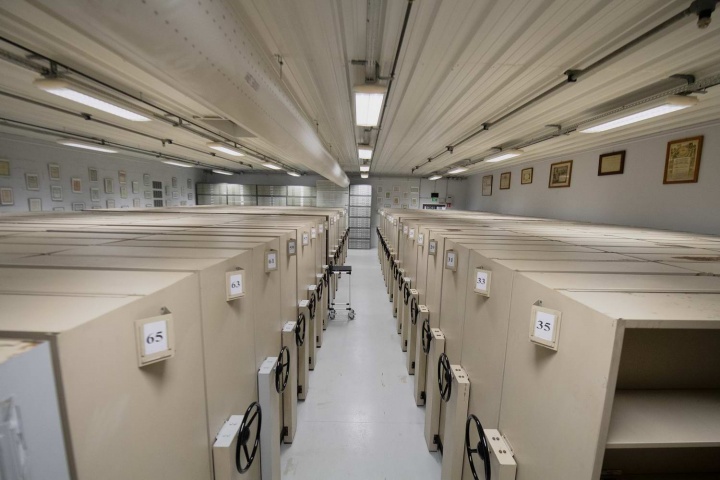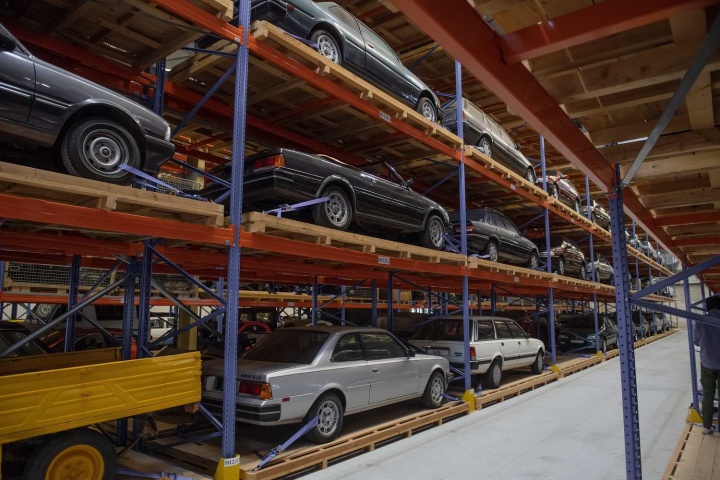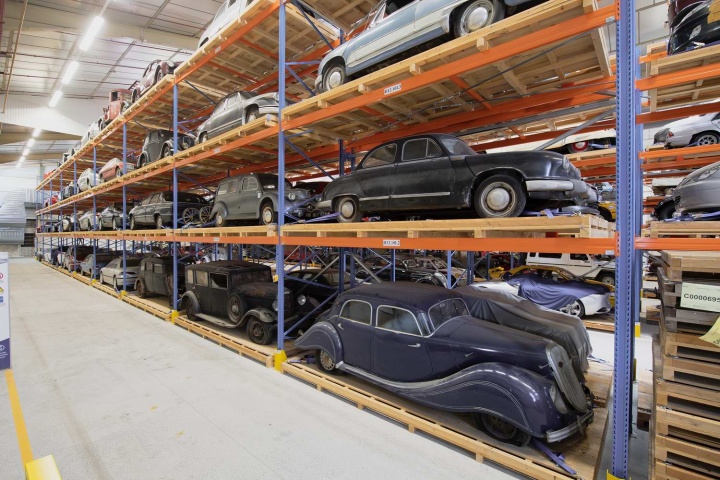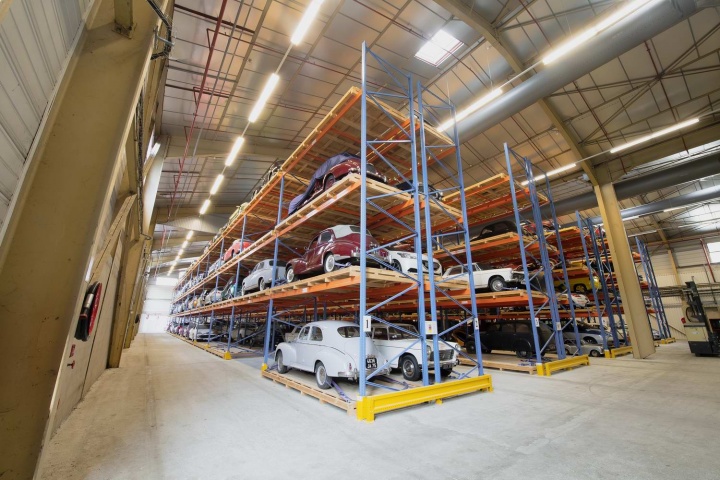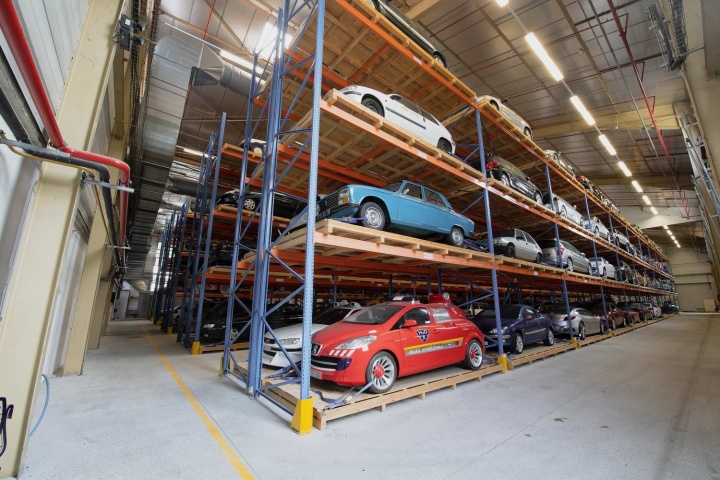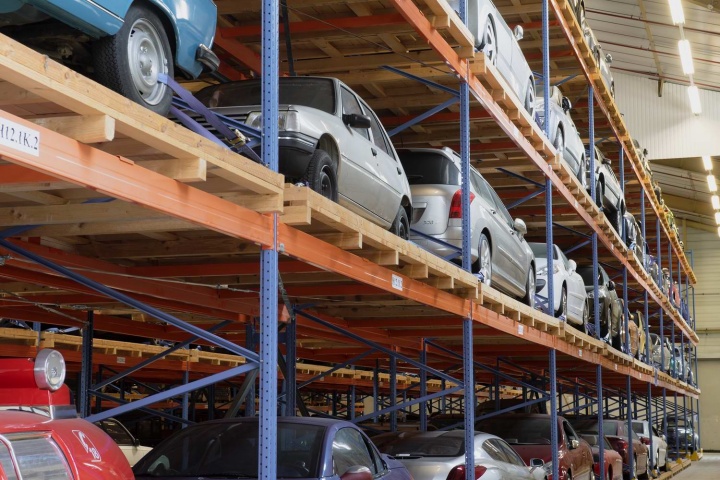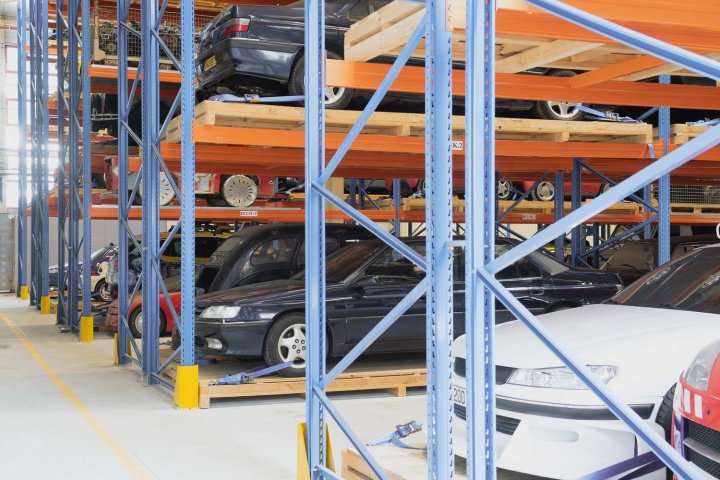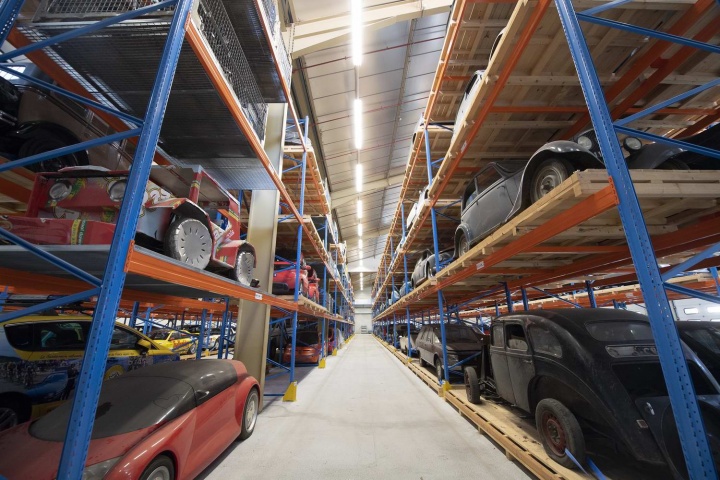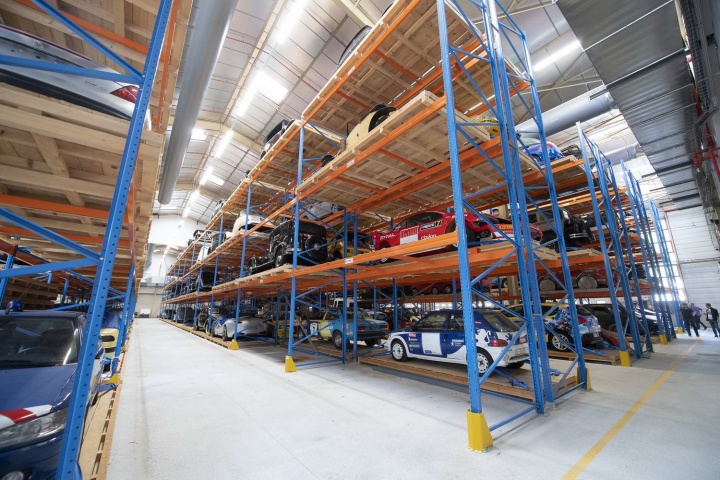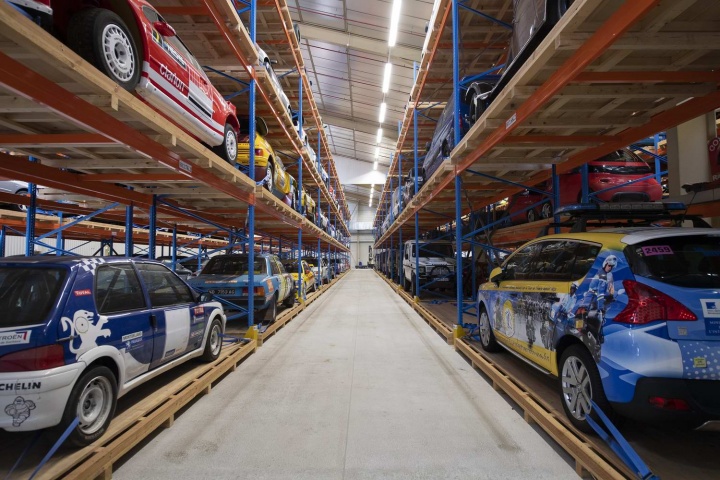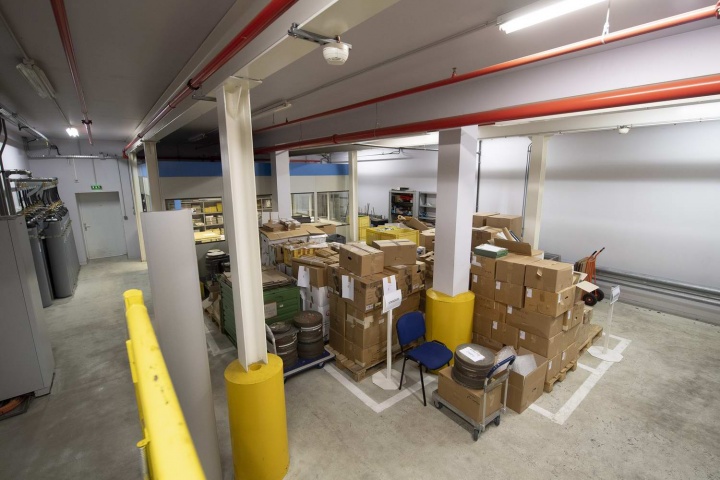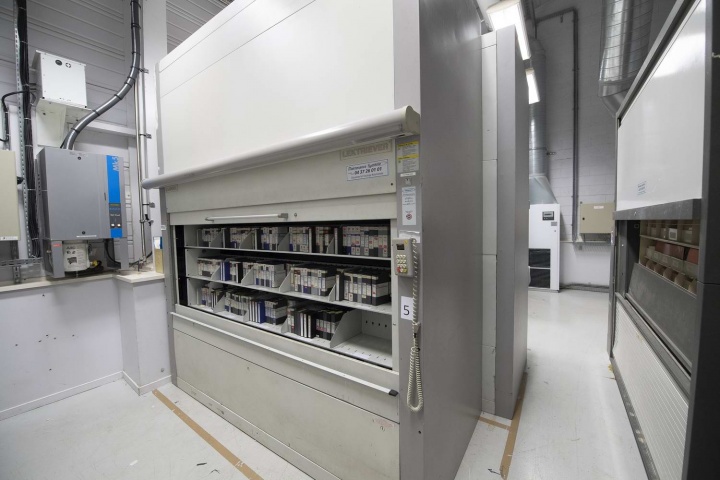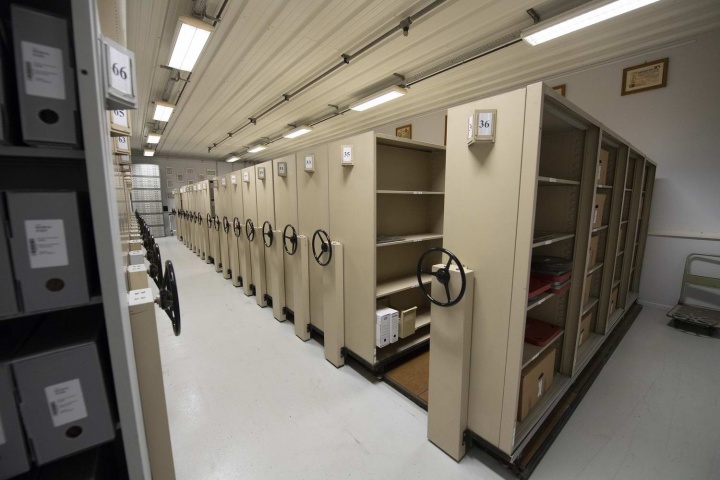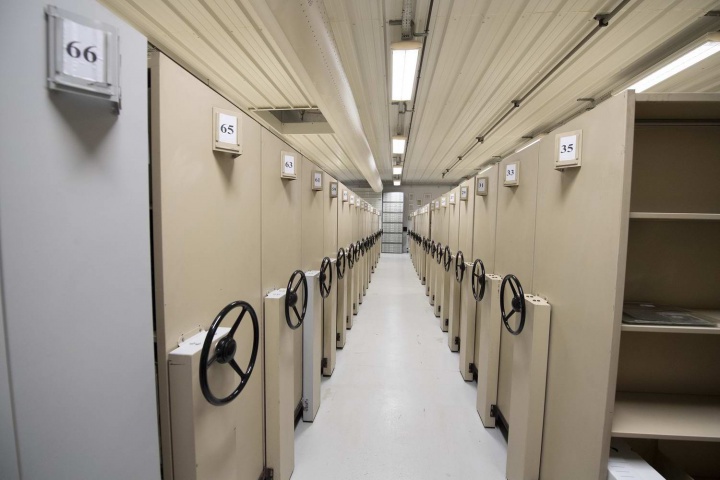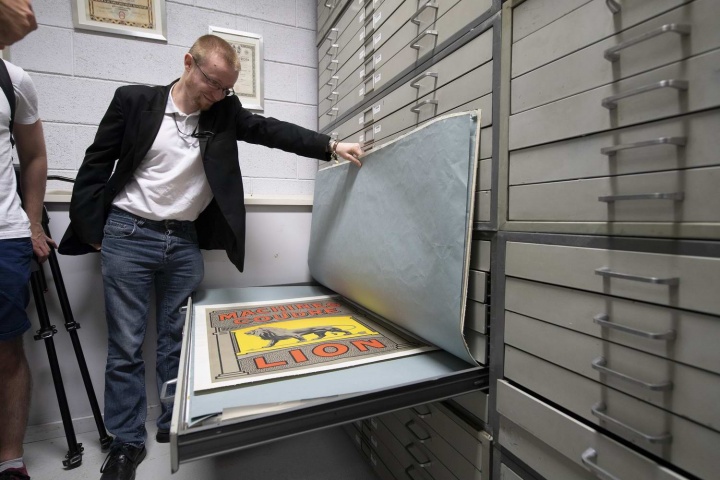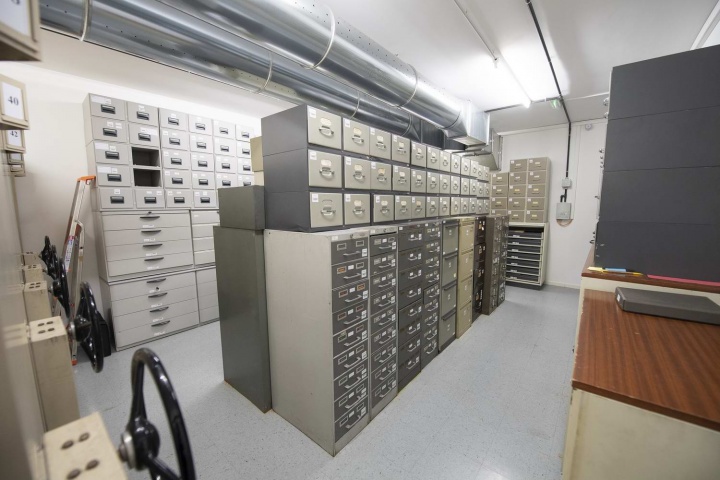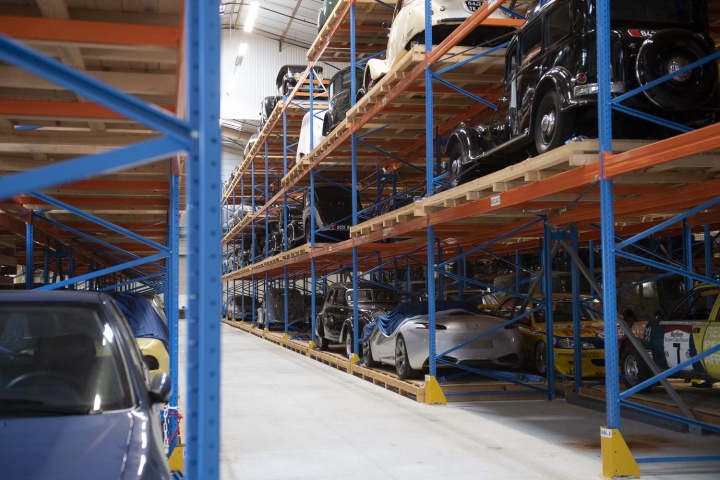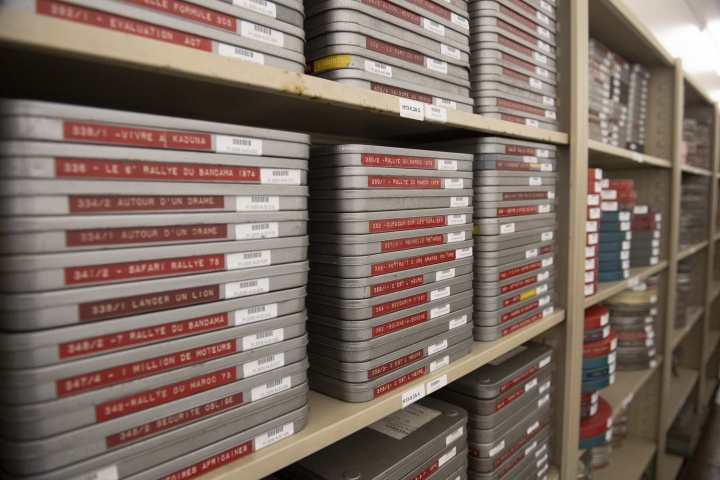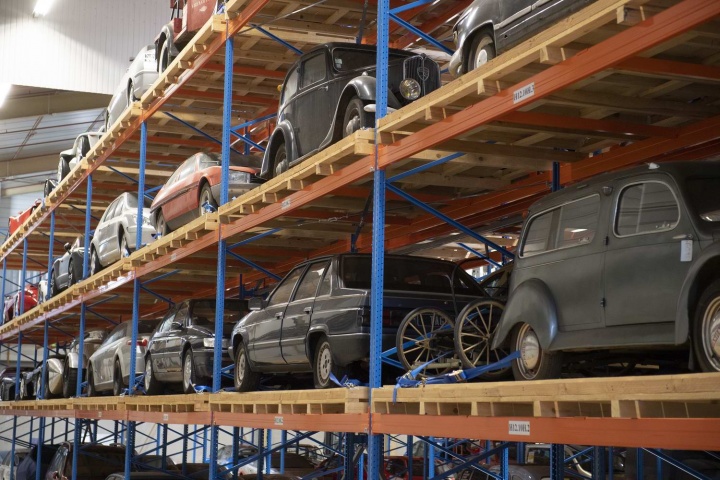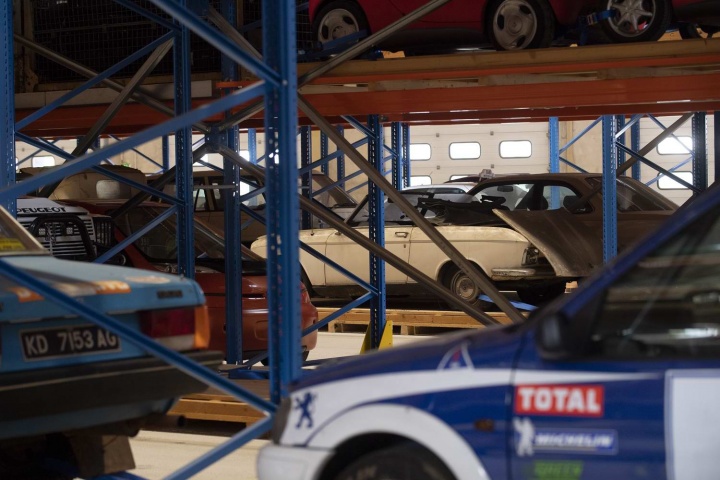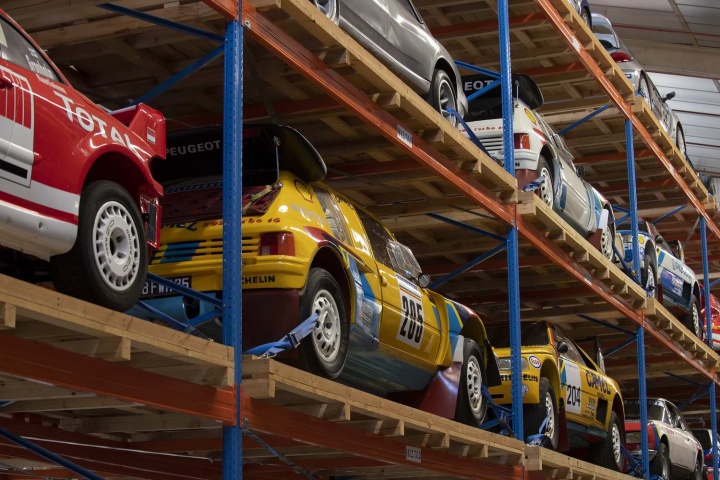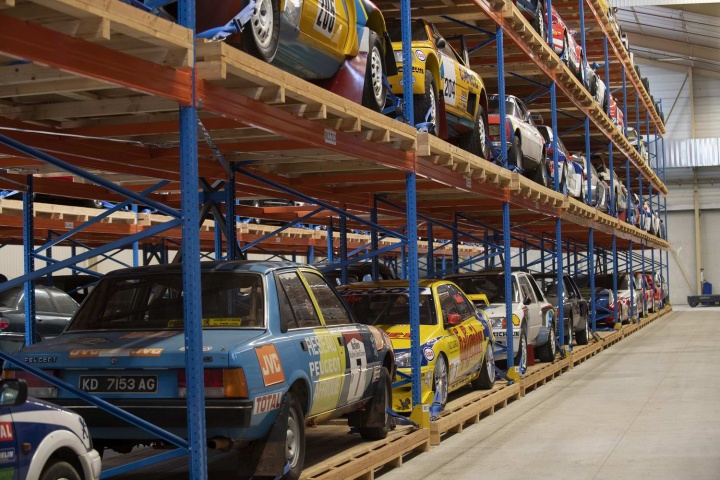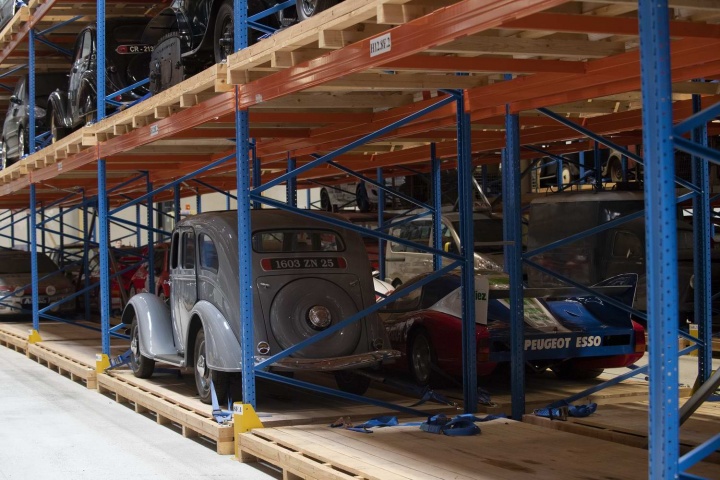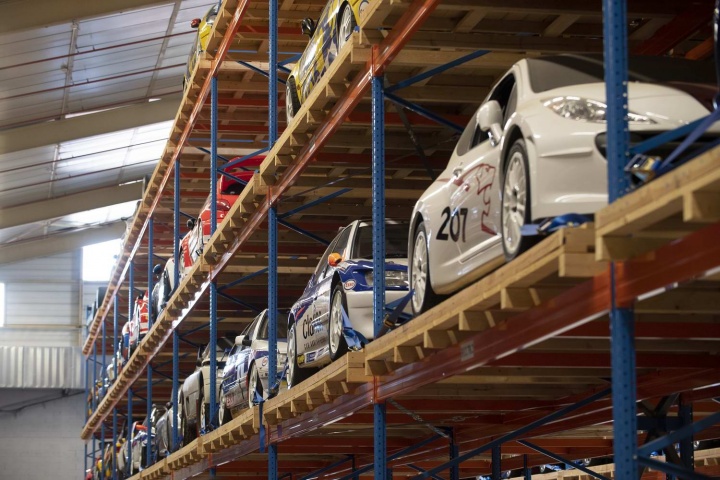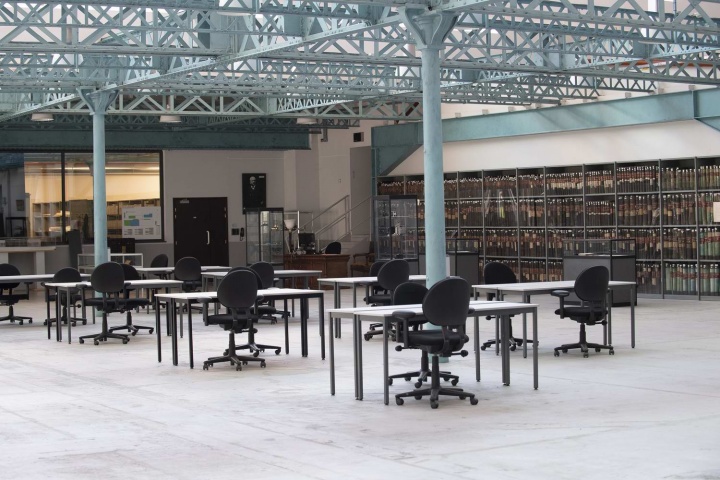You think of an archive, and you probably think of dust. You think of crusty old librarians blowing the dust of decades or centuries from some leather-backed tome, before settling down to read Goonhilly's 1823 Translation of Homer (no, the Greek one) or some such. If you're me, you maybe briefly also think of Harrison Ford as Indiana Jones, telling his university students that archaeology is mostly done in books, not in the field, and that X never, ever, marks the spot (before going on to disprove his own teachings within a Spielberg minute). Or you might have a brief image of Robert Redford's Woodward and Dustin Hoffman's Bernstein, painstakingly working through the card index of the Library of Congress, looking for the trail of wrongdoing perpetrated by All, yes all of, The President's Men.
What you probably don't think of is a ceiling-high stack of cars, half the length of a football field and taller than your house, like someone shone an embiggening ray on your Hot Wheels collection. This is Peugeot's archive, its repository of history, and it's a fascinating place.
It's also the most unprepossessing place you can imagine from the outside. It's in a plain, white, industrial unit - of 1930s design - located a half-hour's drive from Peugeot's public-facing museum in the eastern French town of Sochaux. The museum itself is fab, but the archive is something else again - a place kept away from the public eye, other than for a very occasional open day. It's a former seatbelt factory and, when you initially walk inside, you're struck by a delicious coolness, a contrast to the baking heat of an August day outside.
That's partially of course because the whole facility is climate-controlled - the better to preserve delicate documents and films - but also because the building was thoughtfully designed from the get-go to be a physically cool place in which to work in the heat of the Jura valley.
This space, topped by gorgeously industrial pale blue steel beams, is now used as a venue for Peugeot events and displays. But behind it lies the real treasure trove...
You access the archive through an actual armour-plated door (and just to continue the movie references, if doing so doesn't give you a frisson of War Games then I don't want to be your friend...), there to help prevent any fire from spreading, and to protect the most delicate of documents.
The first room is stacked with shelves, but it's also a digitisation studio where original drawings and images are being taken and turned into jpegs for future use. As we arrive, a beautiful sketch by seventies Citroen designer Robert Opron, a taster of what would become the CX, is mounted to a wall, being turned into digital pixels. The archive isn't skimping on this either - they're not just taking a handy snap with an iPhone. The camera being used is a NASA-standard Hasselblad, originally a large-format film camera, but now modified with a digital module. It's the kind of camera that could make anyone look good. Opron's sketch needs no such help.
At another station in the room, a digital 3D camera is being used to photograph other documents. Why 3D? Because some of these documents are too fragile to be flattened out for scanning - many would simply turn to dust if you tried it - so the 3D camera can take a photo of a curved or folded page, and digitally flatten-out the contours for a perfect hi-def scan.
The climate and temperature of the archive are carefully controlled. For paper, it's kept cool and at 50 per cent humidity. For photos, it's kept a touch drier than that, and there are huge bottles of nitrogen ready to spray the inert gas into the rooms to tamp any potential fire and keep it from spreading.
There are also no plastic document wallets. Why? "Because you can't store paper in plastic" one of the archivists tells CompleteCar.ie. "Leave a paper document in a plastic wallet for ten years and see what happens. Half of the ink will have transferred to the plastic and now you have no document. Instead we use a specially created polythene; it's chemically inert and so it's safe to keep the papers in that."
The archive is receiving more and more documents every week. Already there are enough documents in the archive to stretch for some eight kilometres if you placed it all end-to-end, and another 200 metres' worth arrives each month to be sorted. Most comes from PSA Groupe offices around the world as attics and dealerships are periodically cleared out, but some comes from private individuals, keen to place their little slice of French car making history into the hands of the true experts.
Speaking of history, there is history here by the literal bundle. We pass through room after room filled with shelves, and those wonderfully tactile sliding units that march across the floor as you turn the handles on their ends. Here, there are some real treasures. We are shown a document dating from 1892, hand-written by Armand Peugeot himself. In it, he is laying out the investment needed to turn this family-owned maker of pepper mills and tools into a car manufacturer. The brothers dissented, but thankfully for our purposes, Armand ignored them and went ahead.
What he went ahead with is revealed in another drawer. It's a blueprint, dating from 1888, and it's for a small quadricycle, a four-wheeled contraption closer to a motorised buggy than what you or I would consider a car. But it's also one of the earliest vehicles ever to be designed around a petrol-fuelled (as opposed to alcohol-fuelled) combustion engine. That, though, is not its true significance. Its significance is that it was a shared design, pored over and annotated by three pioneers of the modern car - Armand Peugeot, Gottlieb Daimler and Emile Levassor. All three collaborated, openly, trying to get the whole idea of a motorised personal transport off the dark blue paper and into steel-and-wooden reality.
That reality is writ large in the last, vast hall of the archive. Beyond the serried ranks of card indexes and cans of original 35-millimetre film, lies the vehicle archive itself. This is where the main museum's exhibits rest when not on public duty, stacked four-high on individual pallets, ready to be plucked out by a special forklift when needed. You'd be tempted to assume that this is the rejects pile (a thought given some truth by the fact that one of the first cars we laid eyes on was a Talbot Tagora...), but it's not the case. Here are the cars waiting for their turn to be put on sparkling public show. Some are restoration projects. A pre-war Peugeot 202 looks impossibly ratty, but is structurally sound and awaiting its time in the workshop. By contrast, a metallic-grey-blue 404 saloon from the 1950s looks perfectly good, but the undersides are a mess of rust, so it will simply be stripped for parts for other projects.
There are some stunning gems in here, though. Peugeot 205 T16 rally cars - that icon of Group B madness - are almost commonplace. Up on row three is the amazing 405 Pikes Peak car, as driven by Ari Vatanen for the Climb Dance video that I would have worn out from watching if you could wear out YouTube. Lower down is the 504 saloon that won the Safari Rally in the hands of Ove Andersson and Arne Hertz. It's bashed and dented, and the windscreen is starred with cracks, but these are not effects of age - they are original rallying wounds, and the archivists have preserved them, rather than erasing them with repair and restitution.
The list goes on - a perfect, black, 205 GTi with those glorious pepper pot alloy wheels; 504 Coupe rally cars; the Rally Raid 405; a bullet-ridden stunt 406 saloon from the Taxi movies; a 407 SW estate that, bizarrely, has stuck-on wooden side panels; a pre-war 202 with tank-tracks at the back; a melange of seventies, eighties and nineties concept cars, most of which are driveable runners; an unassuming 806 people carrier fitted, almost uniquely, with a big V6 engine. The cars range from the appealingly everyday - a dusty, burgundy coloured 504 seven-seat estate - to pre-war flights of art deco fancy. There are even some occasional post-war Panhards, with their incredibly daring aerodynamic shapes, adding beautiful contrast to Peugeot's more upright, stentorian designs of the time. There's a one-off 106-based sports car that really should have been put into production, and a blue five-door hatchback that looks like a 104 variant, but which is actually the earliest mock-up of what would become the epochal Peugeot 205.
There is so, so, much more. More than can be read, viewed, catalogued, or even described in a lifetime of lifetimes. The Peugeot museum is a great destination, a nice family day out, but the archive is the home for the true car geeks, a hidden modern-day cave of treasure after treasure. Go, if and when you can.

